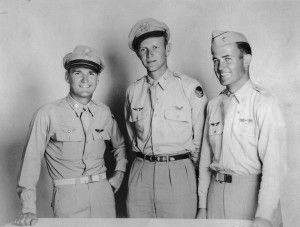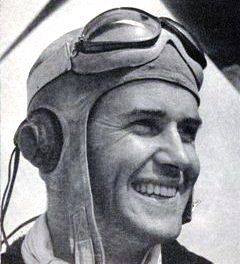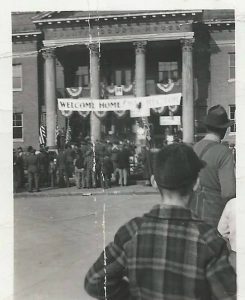Captain’s Courageous, Kim, The Jungle Book, Wee Willie Winkie. All of those beloved titles were authored by English author & poet Rudyard Kipling. Captain’s Courageous stands among my favorite reads from childhood but not even once did it ever occur to me that I should use these books of adventure and wonder as stepping stones for my future. However, another mountain boy’s life and history itself would be shaped by that thirst for adventure and knowledge.
 My own thirst for knowledge helped me to “discover” one man’s story. Although I have spent the majority of my life in Madison County, North Carolina, I had never heard of him until two weeks ago when I happened upon him while conducting some research. My mouth was agape in disbelief at the information received from two different websites. I’ve always said that each and every tombstone tells a story, regardless if it is marked or not. That belief was reaffirmed as I looked at this information:
My own thirst for knowledge helped me to “discover” one man’s story. Although I have spent the majority of my life in Madison County, North Carolina, I had never heard of him until two weeks ago when I happened upon him while conducting some research. My mouth was agape in disbelief at the information received from two different websites. I’ve always said that each and every tombstone tells a story, regardless if it is marked or not. That belief was reaffirmed as I looked at this information:
Arlington National Cemetery. Section 66, Site 6467. Edward Franklin Rector. Colonel. United States Air Force. Hometown: Marshall, North Carolina.
I was instantaneously taken back to my childhood, flashbacks of Revell’s P-40 Curtiss Warhawk model airplane racing through my head. The P-40 Warhawk is an airplane of legend. Even among airplane or history novices, its shark faced nose is immediately recognized as the airplane of World War Two’s famed Flying Tigers.
To say I was stunned that a mountain boy from Appalachia’s Madison County, North Carolina would have been a pilot for this legendary group of combat aces would be a huge understatement. After collecting myself, I immediately contacted my friend Pat Franklin.
“Did you know that the town of Marshall, population 872, produced one of World War Two’s Flying Tigers?” I asked, still incredulous at the realization.
Pat, collector of all things Marshall and Madison County, simply replied “Yes. I even have a photo of his homecoming parade.” She even knew Rector, saying that “he had Hollywood movie star good looks.”
‘Well, Heck!’ I thought. Until this day, I had never heard of Colonel Edward Franklin Rector. How could I possibly be so ignorant? I began searching for everything I could find on Colonel.
 Edward Franklin Rector, better known as “Ed”, had been born in 1916 to George and Gertrude Rector, the third of six children. Ed would state later that he liked growing corn and tobacco. The issue was that he was a devout Rudyard Kipling fan, whose stories planted the desire to seek out adventure.
Edward Franklin Rector, better known as “Ed”, had been born in 1916 to George and Gertrude Rector, the third of six children. Ed would state later that he liked growing corn and tobacco. The issue was that he was a devout Rudyard Kipling fan, whose stories planted the desire to seek out adventure.
In an interview with Bob Bergin of Military History, Rector stated that as a young man he “read twice over everything Rudyard Kipling had written.”
After graduating high school, he went to Catawba College where he played football. After graduating in 1938, he joined the United States Navy as a naval pilot. He was stationed in Norfolk, Virginia aboard the Ranger, the first ship in U.S. naval history to be designed from keel up as an aircraft carrier.
Meanwhile, Japan had begun to really ramp up its assault in Southeast Asia. This aggression would lead to Japan’s December 7, 1941 bombing of the United States military base in Pearl Harbor, Hawaii forcing the United States into World War Two.
However, President Franklin Delano Roosevelt had already secretly authorized and approved the formation of the clandestine First American Volunteer Group who would actually fly for the Chinese Air Force under the command of military legend Colonel Claire Chennault.
Chennault would purchase 100 Curtiss P-40 Warhawks, which had been rejected by the British as “obsolete”.
In his interview with Bergin, Colonel Rector stated “In my one year in the Navy, where they measure you in every way they can, I had gotten high marks. When I heard about the AVG, I saw an opportunity to find out if I was as good as I thought. I also had read twice over everything that Rudyard Kipling had written, so this was right up my alley. . . . And to be paid a fabulous salary and a bounty for each plane destroyed sounded heaven-sent. I jumped at the chance.”
However, to volunteer for this group, each and every pilot had to resign their position of their respective military branches.
Pilots were paid $500 US per month, three times what a pilot in any United States military branch was paid. That is equivalent to $8,742.36 by 2018 rates. They were also paid a $500 US “Bounty” on each enemy aircraft destroyed. No wonder Rector jumped at the chance!
 With the rank of Major, Rector would fly alongside the likes of Gregory “Pappy” Boyington and Charles Older, among 102 others. Boyington would wind up leaving The Flying Tigers but go on to see a 1970’s television show “Black Sheep Squadron” created, based on his experiences. Older would go on to become a California Superior Court Judge, where years later he would preside over the Charles Manson murder trial.
With the rank of Major, Rector would fly alongside the likes of Gregory “Pappy” Boyington and Charles Older, among 102 others. Boyington would wind up leaving The Flying Tigers but go on to see a 1970’s television show “Black Sheep Squadron” created, based on his experiences. Older would go on to become a California Superior Court Judge, where years later he would preside over the Charles Manson murder trial.
After the Japanese attack on Pearl Harbor, the Flying Tigers flew their first mission on December 20, 1941. Major Rector would be given credit for the Flying Tigers first kill which happened over Rangoon.
In his interview with Bergin, Rector stated “[I] . . . started a curve of pursuit down for the last plane [a Kawasaki Ki-48 bomber] on the left of that nine-plane ‘V’ formation and started shooting. I saw my tracers going in, wingtip to wingtip. . . . There was a tail gunner firing back at me as I came right up the tail, just shooting the hell out of him. . . . As I climbed, I looked back. There was a flame from just aft of the pilot’s cockpit, streaming back 50 feet beyond the tail.”
The Flying Tigers had a huge success rate, losing a total of only two airplanes in a six and one half month period.
As the war began to rage intensely, the Flying Tigers were disbanded on July 4, 1942. They flew their final mission on that very day, with Major Edward Rector receiving credit for the Flying Tigers last kill, which happened over Kwelin.
The kid from Madison County, North Carolina had scored both the first and last kills of the Flying Tigers! The last kill brought his total to 10.5. That means that between salary and bounties during that six and one half span, he had earned today’s equivalent of $125,000!
 After the disbanding, Rector rejoined the United States military, serving with the Chines Air Task Force and by the end of the war would retain the rank of Colonel. He was treated to the aforementioned welcome home parade upon his return to Marshall.
After the disbanding, Rector rejoined the United States military, serving with the Chines Air Task Force and by the end of the war would retain the rank of Colonel. He was treated to the aforementioned welcome home parade upon his return to Marshall.
Rector remained in the military serving until his 1962 retirement and never again would live in Madison County. In his search for adventure, Colonel Rector never married or had children dying of a heart attack on April 26, 2001 at age 84.
With everything being said, given the record of Colonel Edward Franklin Rector, I think it’s safe to say he lived out his life in the finest fashion of any Rudyard Kipling character. How fitting.
‘If history were taught in the form of stories, it would never be forgotten’ – Rudyard Kipling
Y’all have a great week!
Photo Credits
Flying Tigers in Flight – www.history.net
Edward Rector Homecoming – Pat R. Franklin
Edward Rector Photo – Life Magazine

